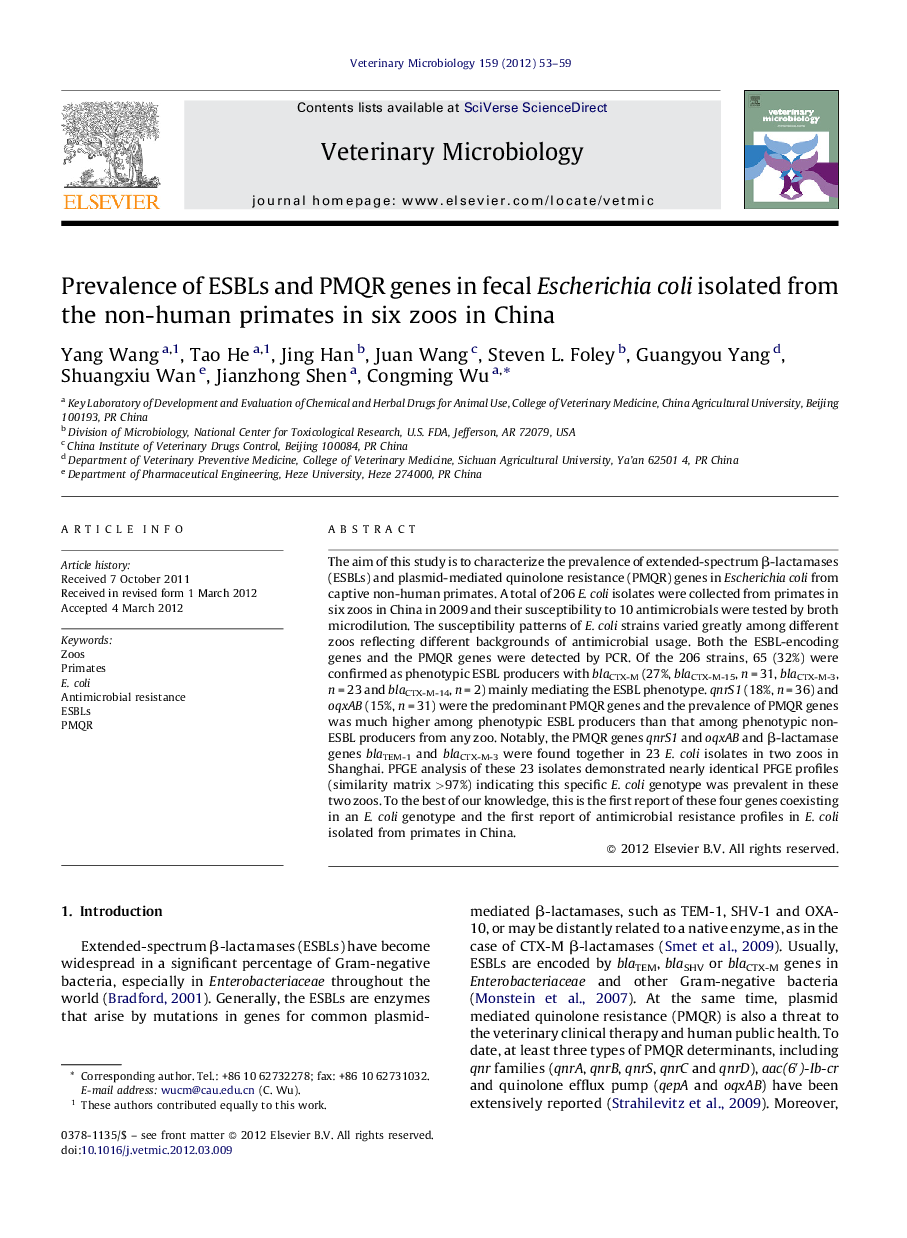| Article ID | Journal | Published Year | Pages | File Type |
|---|---|---|---|---|
| 2467059 | Veterinary Microbiology | 2012 | 7 Pages |
The aim of this study is to characterize the prevalence of extended-spectrum β-lactamases (ESBLs) and plasmid-mediated quinolone resistance (PMQR) genes in Escherichia coli from captive non-human primates. A total of 206 E. coli isolates were collected from primates in six zoos in China in 2009 and their susceptibility to 10 antimicrobials were tested by broth microdilution. The susceptibility patterns of E. coli strains varied greatly among different zoos reflecting different backgrounds of antimicrobial usage. Both the ESBL-encoding genes and the PMQR genes were detected by PCR. Of the 206 strains, 65 (32%) were confirmed as phenotypic ESBL producers with blaCTX-M (27%, blaCTX-M-15, n = 31, blaCTX-M-3, n = 23 and blaCTX-M-14, n = 2) mainly mediating the ESBL phenotype. qnrS1 (18%, n = 36) and oqxAB (15%, n = 31) were the predominant PMQR genes and the prevalence of PMQR genes was much higher among phenotypic ESBL producers than that among phenotypic non-ESBL producers from any zoo. Notably, the PMQR genes qnrS1 and oqxAB and β-lactamase genes blaTEM-1 and blaCTX-M-3 were found together in 23 E. coli isolates in two zoos in Shanghai. PFGE analysis of these 23 isolates demonstrated nearly identical PFGE profiles (similarity matrix >97%) indicating this specific E. coli genotype was prevalent in these two zoos. To the best of our knowledge, this is the first report of these four genes coexisting in an E. coli genotype and the first report of antimicrobial resistance profiles in E. coli isolated from primates in China.
